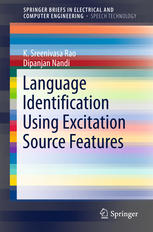

Most ebook files are in PDF format, so you can easily read them using various software such as Foxit Reader or directly on the Google Chrome browser.
Some ebook files are released by publishers in other formats such as .awz, .mobi, .epub, .fb2, etc. You may need to install specific software to read these formats on mobile/PC, such as Calibre.
Please read the tutorial at this link: https://ebookbell.com/faq
We offer FREE conversion to the popular formats you request; however, this may take some time. Therefore, right after payment, please email us, and we will try to provide the service as quickly as possible.
For some exceptional file formats or broken links (if any), please refrain from opening any disputes. Instead, email us first, and we will try to assist within a maximum of 6 hours.
EbookBell Team

4.0
6 reviewsThis book discusses the contribution of excitation source information in discriminating language. The authors focus on the excitation source component of speech for enhancement of language identification (LID) performance. Language specific features are extracted using two different modes: (i) Implicit processing of linear prediction (LP) residual and (ii) Explicit parameterization of linear prediction residual. The book discusses how in implicit processing approach, excitation source features are derived from LP residual, Hilbert envelope (magnitude) of LP residual and Phase of LP residual; and in explicit parameterization approach, LP residual signal is processed in spectral domain to extract the relevant language specific features. The authors further extract source features from these modes, which are combined for enhancing the performance of LID systems. The proposed excitation source features are also investigated for LID in background noisy environments. Each chapter of this book provides the motivation for exploring the specific feature for LID task, and subsequently discuss the methods to extract those features and finally suggest appropriate models to capture the language specific knowledge from the proposed features. Finally, the book discuss about various combinations of spectral and source features, and the desired models to enhance the performance of LID systems.